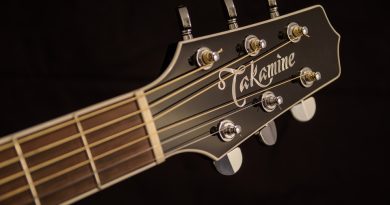Mastering Pop Chords: A Beginner’s Guide to Guitar Chords
Mastering Pop Chords: A Beginner’s Guide to Guitar Chords
As a guitarist, one of the first things you will learn is how to play chords. Chords are the foundation of most songs in popular music, and mastering them is essential for any aspiring musician. In this guide, we will cover everything you need to know about playing pop chords on the guitar, from basic chord shapes to more advanced techniques.
Understanding Basic Chord Theory
Before we dive into specific chord shapes, it’s important to have a basic understanding of chord theory. In music, a chord is a group of three or more notes played together, creating harmony. The most common type of chord is a triad, which consists of three notes: the root, the third, and the fifth. For example, a C major chord consists of the notes C, E, and G.
Chord Progressions
Chord progressions are the backbone of most songs in popular music. A chord progression is a series of chords played in a specific order, creating a sense of musical tension and resolution. Many pop songs use the same four chords, known as the I-IV-V-I progression. In the key of C major, these chords would be C, F, G, and back to C.
Common Pop Chord Shapes
There are several common chord shapes that are used in pop music. These shapes are moveable, meaning you can easily transpose them to different keys. Here are some of the most common chord shapes for beginners:
– G major: Place your ring finger on the third fret of the low E string, your middle finger on the second fret of the A string, and your pinky finger on the third fret of the high E string. Strum all six strings.
– D major: Place your index finger on the second fret of the G string, your ring finger on the third fret of the B string, and your middle finger on the second fret of the high E string. Strum from the D string down.
– C major: Place your index finger on the first fret of the B string, your middle finger on the second fret of the D string, and your ring finger on the third fret of the A string. Strum from the A string down.
Practice switching between these chord shapes to build muscle memory and improve your dexterity. Start by strumming each chord individually, then try switching between them in a simple chord progression.
Barre Chords
Once you are comfortable with basic chord shapes, you can start exploring more advanced techniques like barre chords. Barre chords involve using your index finger to press down on all six strings at once, creating a movable chord shape. Barre chords are essential for playing in different keys and expanding your chord vocabulary.
To play an F major barre chord, for example, place your index finger across all six strings on the first fret, your ring finger on the third fret of the A string, your pinky finger on the third fret of the D string, and your middle finger on the second fret of the G string. Strum all six strings.
Experiment with different barre chord shapes and practice transitioning between them to improve your technique and create more dynamic chord progressions.
Strumming Patterns
In addition to mastering chord shapes, it’s important to develop your strumming technique. Strumming patterns help create rhythm and groove in your playing, making your music more dynamic and engaging. Experiment with different strumming patterns, such as down-up strumming, palm muting, and accenting certain beats to add depth to your playing.
Playing along to songs and backing tracks is a great way to practice strumming patterns and improve your timing. Focus on keeping a steady rhythm and strumming in time with the music to develop your sense of groove.
Mastering pop chords on the guitar is a lifelong journey that requires dedication, practice, and patience. By learning basic chord shapes, understanding chord theory, experimenting with different techniques, and developing your own style, you can become a versatile and expressive guitarist. Remember to have fun and enjoy the process of learning and growing as a musician.






